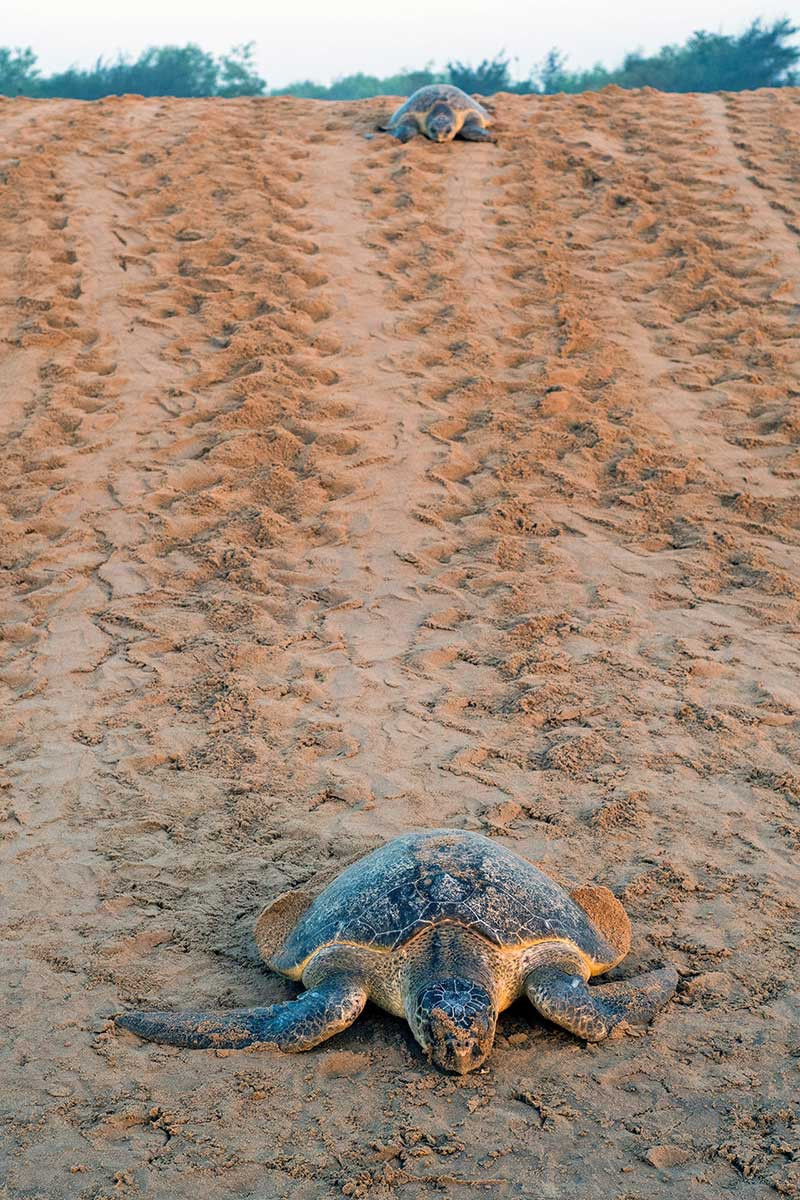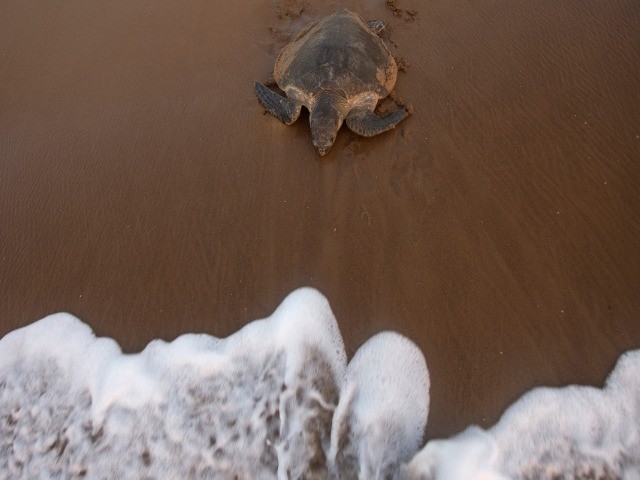Olive Ridley Sea Turtles (Lepidochelys olivacea), also known as Pacific Ridley Sea Turtles, are the most abundant sea turtle species in the world. They are omnivorous reptiles that also feed on small aquatic creatures. Olive Ridley Sea Turtles measure 2 - 2.5 feet long and live for about 50 years. These sea turtles maintain a very peculiar life cycle. They swim long distances to arrive at beaches around the world, usually in February and March, to lay their eggs. The mating usually occurs in the deep sea and lasts for 4 - 5 hours, during which they very rarely come up to the surface for a brief 20-30 seconds.
Among the few beaches of India where the Olive Ridley lays eggs are Rushikulya in Orissa and Versova in Mumbai. My investigation area has mainly been Perambudur beach in Tamil Nadu, where I have worked for more than four years to study the entire breeding process of Olive Ridley Sea Turtles, from egg laying and incubation to the hatching of the baby turtles.
The eggs are safely buried deep inside the sand and incubate for about 45 days. Once the eggs hatch, the hatchlings make their way towards the ocean by following the natural light horizon, which is usually over the ocean. The State Government of Orissa has implemented a programme to monitor and protect the hatchlings from predators and human interference.
Despite the watchful eyes of the patrolling staff, hundreds of eggs and hatchlings succumb to various predators every year. Often, they collect the hatchlings in plastic buckets and drop them in the sea to ensure the progeny of this Vulnerable species.
You may also like to read














